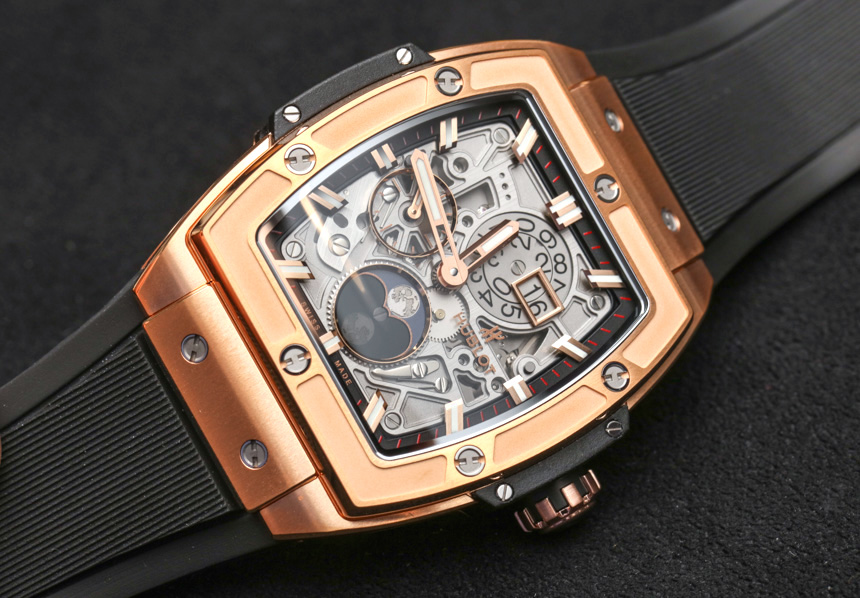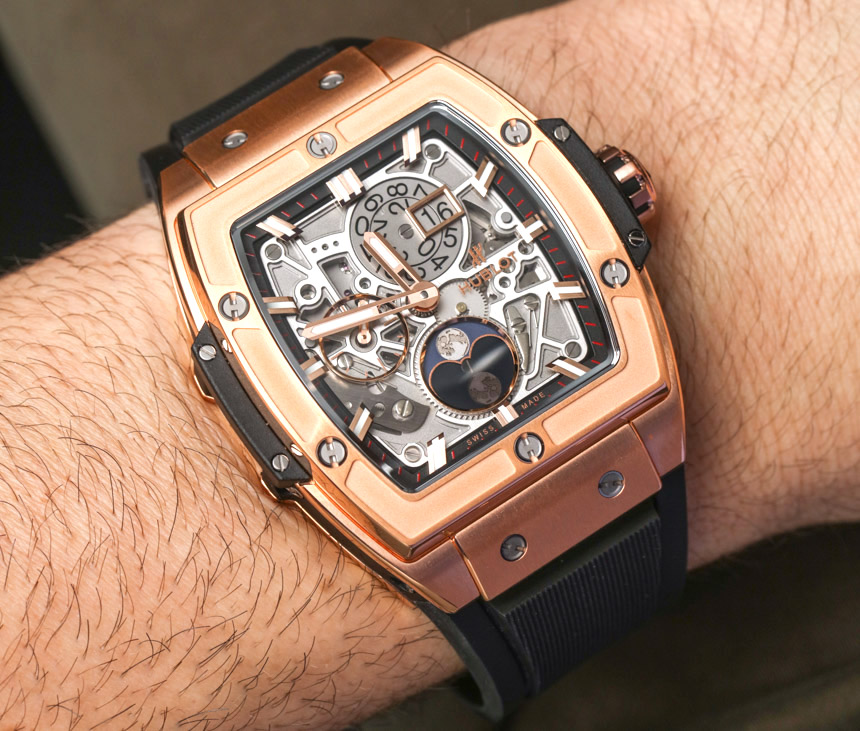
It was back in 2011 that Hublot originally came out with the watch that eventually became the “Hublot Spirit Of Big Bang.” I recall the event in Geneva when Jean-Claude Biver announced that he “accepted” a request to produce a watch that was something along the lines of “what if Hublot produced a watch inspired by Richard Mille?” The two high-end watch makers tend to offer products at very different price points (though both very high-end) and enjoy a mutual respect of one another. The resulting creation was the “Hublot Masterpiece” which I was able to debut hands-on here. It also served as a direct predecessor to the Hublot Spirit Of Big Bang Moonphase watch that we see here today.
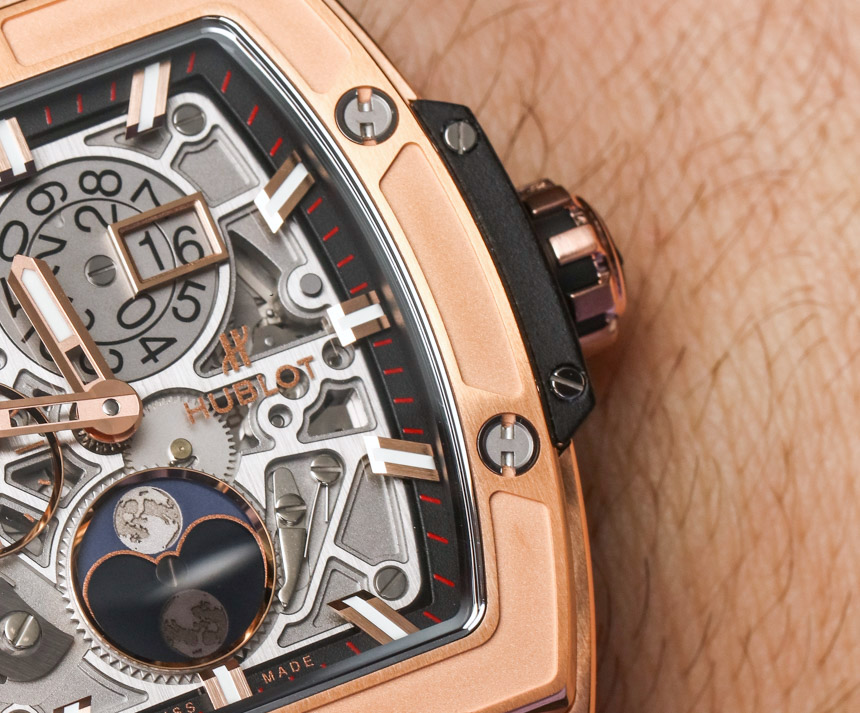
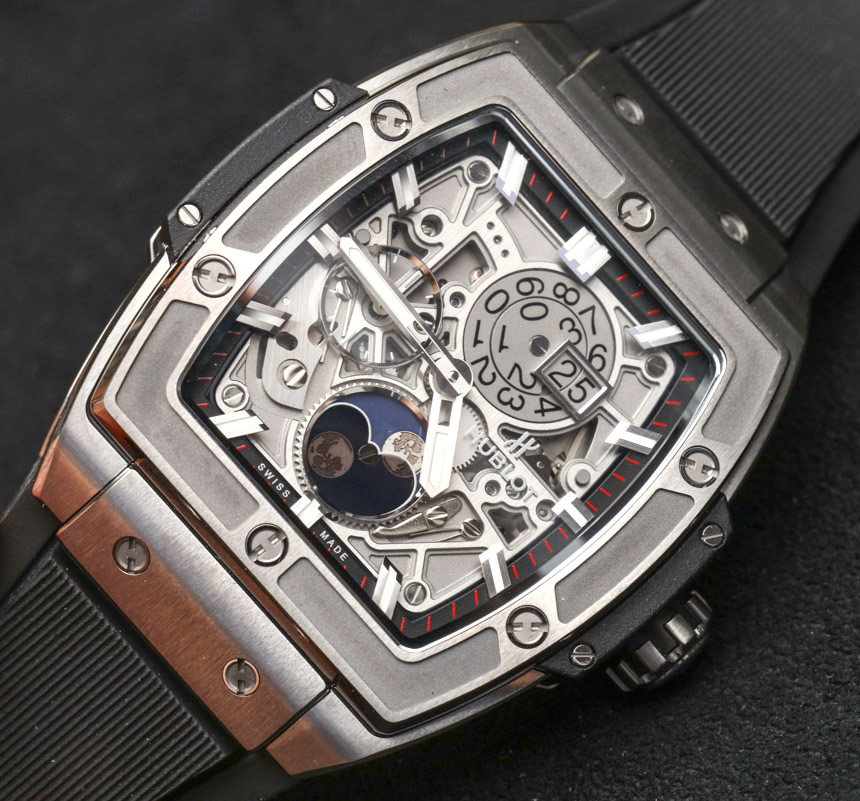
The Hublot Masterpiece was a rather large tonneau-shaped Hublot timepiece with a tourbillon (of course). It was the first tonneau-shaped watch from Hublot, and I wasn’t sure if it was the start of something new, or just a one-time experiment for collectors. Today Hublot has a few tonneau-shaped watches under its belt, and continues to produce a handful of them under the “Spirit Of Big Bang” collection. The “Masterpiece” name lives on, and eventually turned into the “MP-01, MP-02, etc…” moniker. The last Hublot MP watch that I recall in a tonneau-shaped chase was the Hublot MP-06 for Senna from 2013.
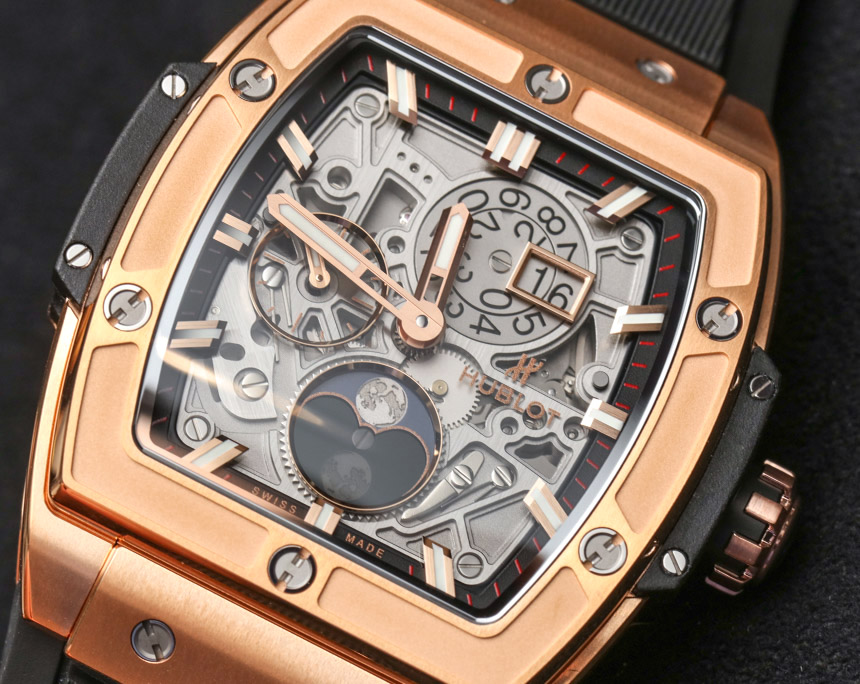
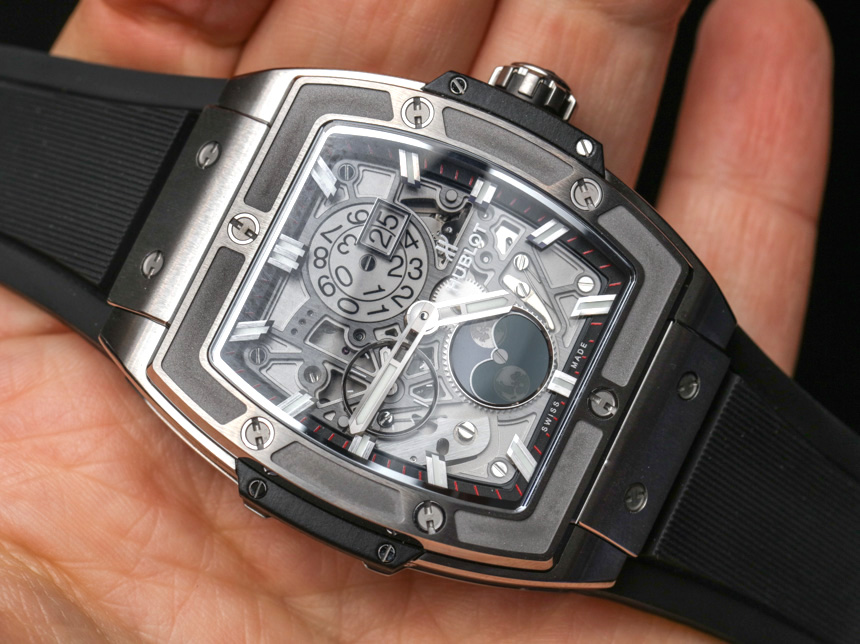
The original Hublot Spirit Of Big Bang came in a 45mm wide case, that given the long dimensions of a tonneau-style case was rather big for most wrists. This particular collection of Hublot Spirit Of Big Bang Moonphase watches sees the debut of a smaller, much more wearable 42mm wide tonneau-shaped case (water resistant to 100 meters). Currently these newer Spirit Of Big Bang Moonphase watches come in two versions with one model in titanium and the other in 18K King Gold (basically red gold).
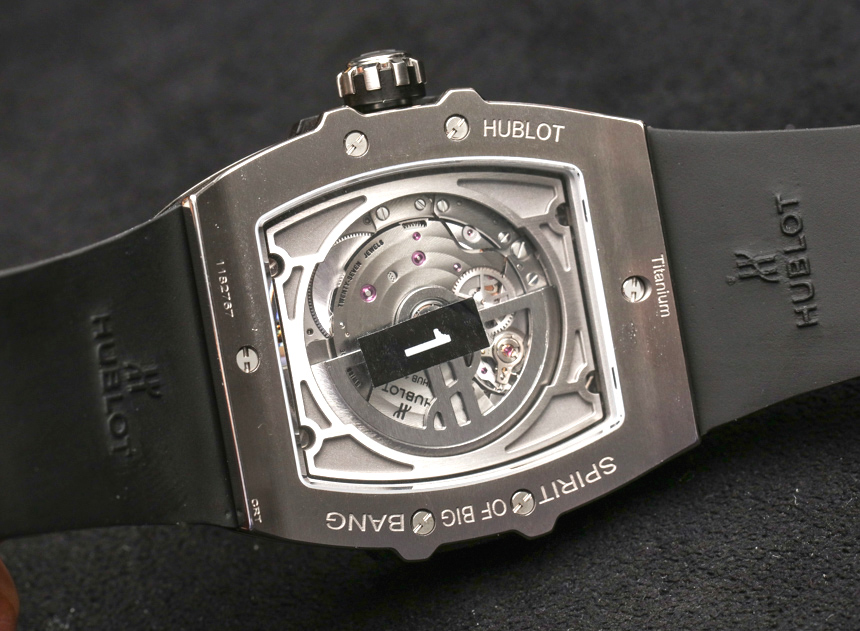
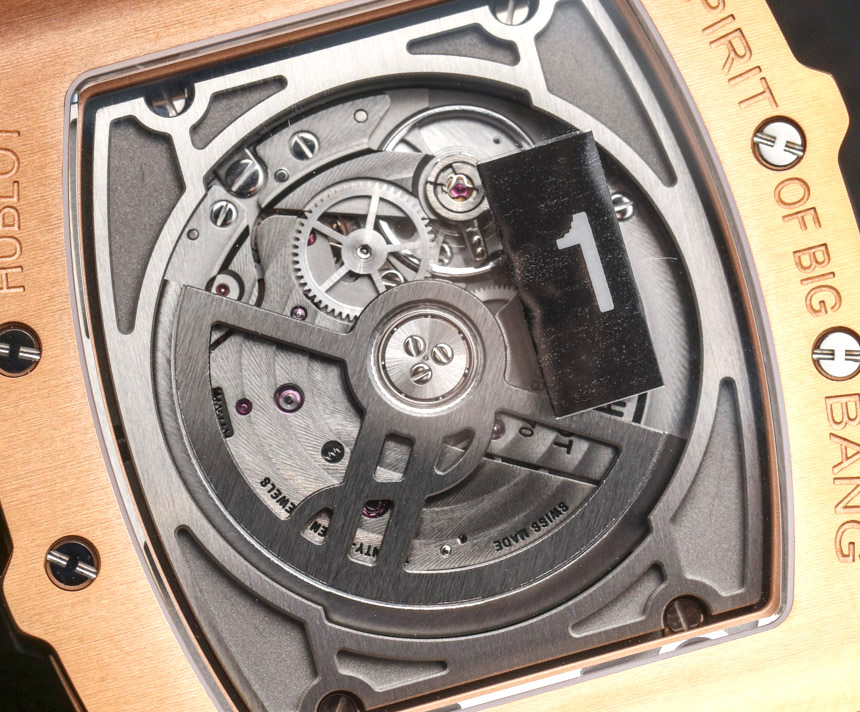
For me the real winner in this timepiece is the case and overall wearing experience. I am not sold on the particular assortment of complications, but the dial design and concept is otherwise compelling. The Spirit Of Big Bang Moonphase does not contain an in-house made movement, but rather a base Swiss ETA (or equivalent) that has been modified for decorative purposes and given a module for the complications in addition to the time. You can view the movement, which Hublot refers to as their HUB1770 automatic, through the sapphire crystal exhibition window on the rear of the case. The movement operates at 4Hz and has a power reserve of 50 hours.
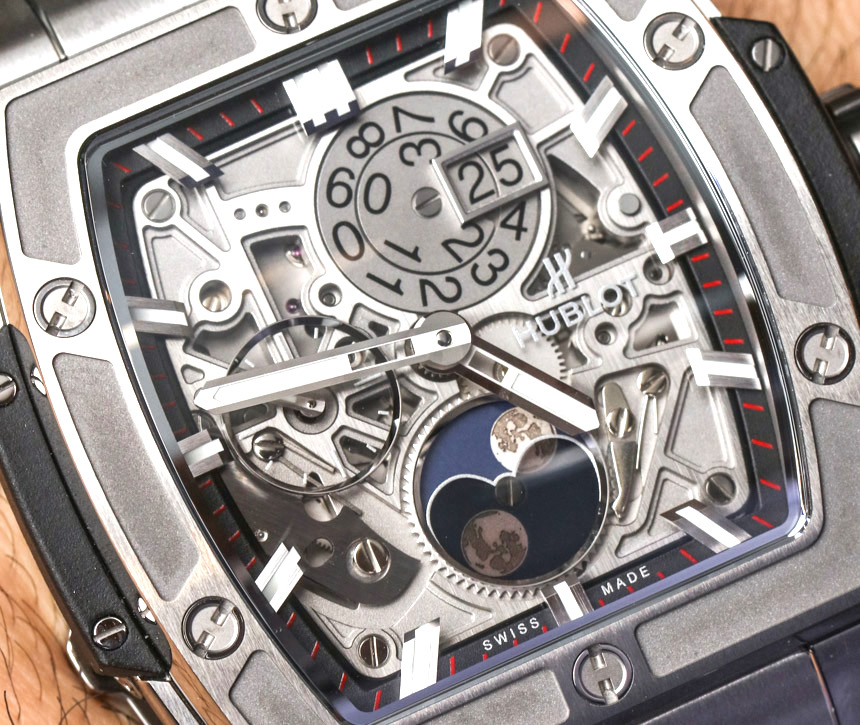
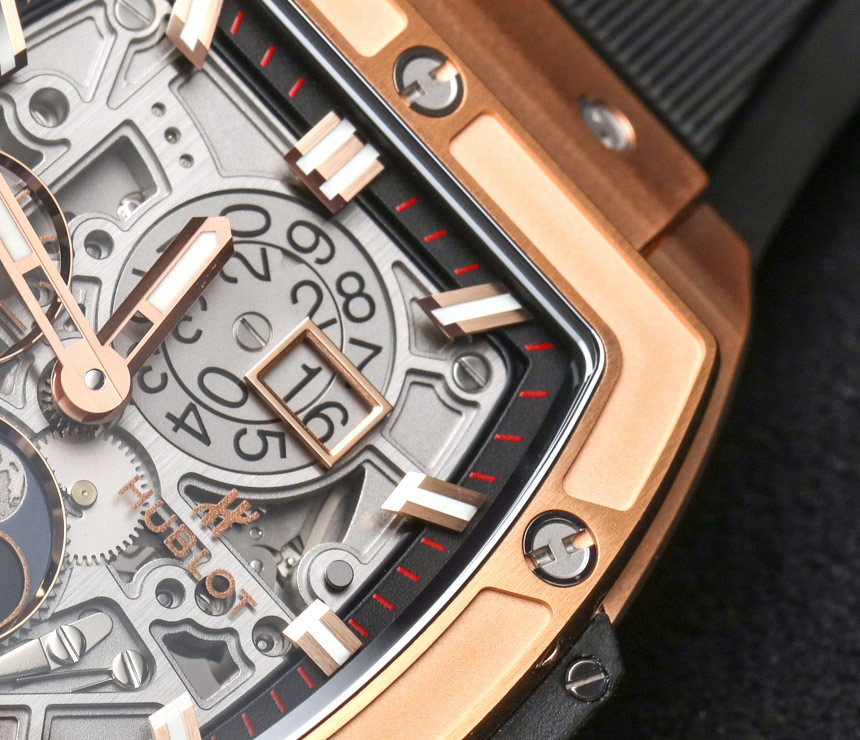
As the name of the watch implies, the dial complications include a moonphase indicator as well as the time with a subsidiary second dial and a subsidiary second hand. The dial displays a neat-looking face which is really a skeletonized look at the module over the movement. It is a mix of purely functional elements as well as a decorative design which lends itself well to the overall theme. The look isn’t for everyone, but it does fall neatly in line with the look of many other skeletonized-dial Hublot products.
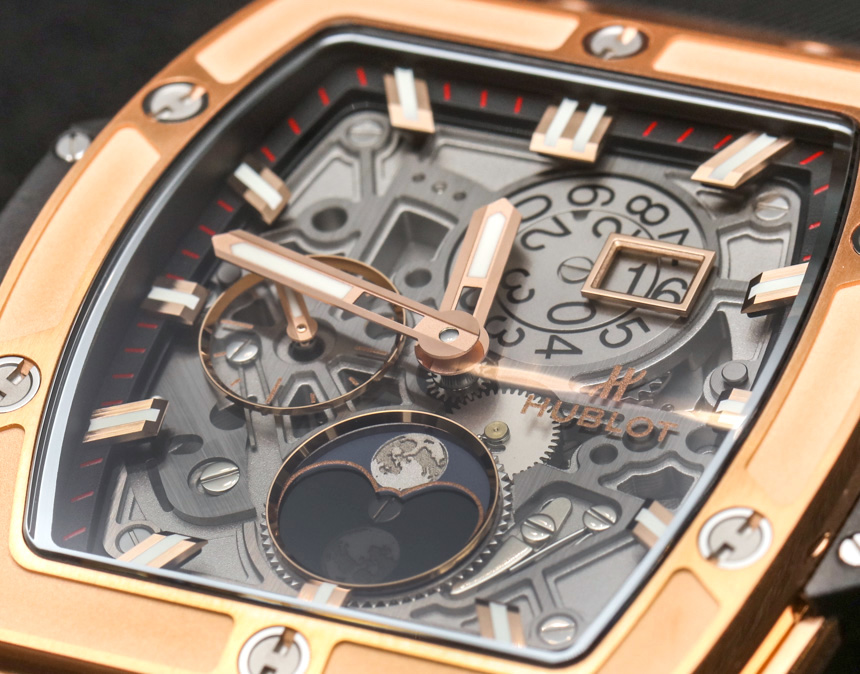
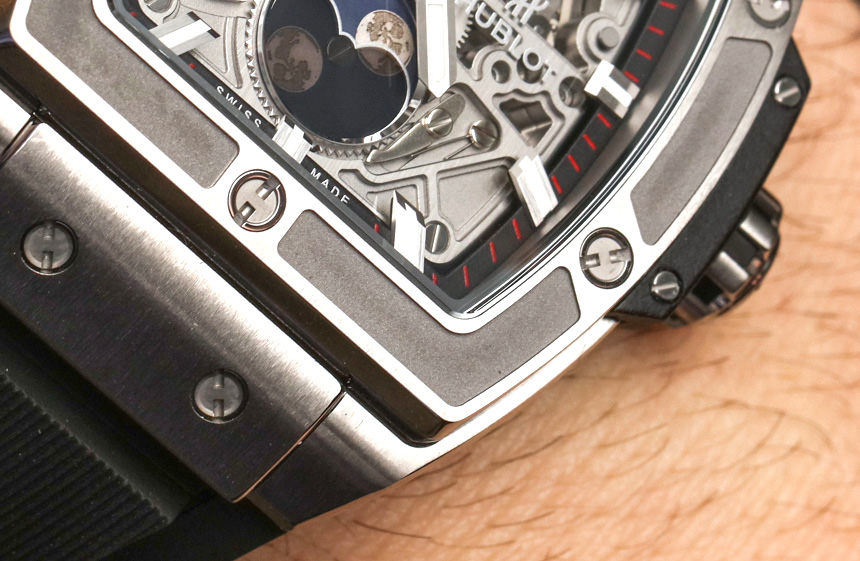
I do like the brushed Big Bang-style hands which offer decent legibility, especially in the King gold version thanks to the added contrast. I’m not a huge fan of skeletonized date displays, but this one isn’t too bad. Even though the dial is asymmetrical in nature, I do feel that the assortment of elements is for the most part rather balanced. Then you have the moonphase indicator window over 6 o’clock which is skeletonized in its own way given the semi-opaque disc used to hide the “not visible” parts of the disc.

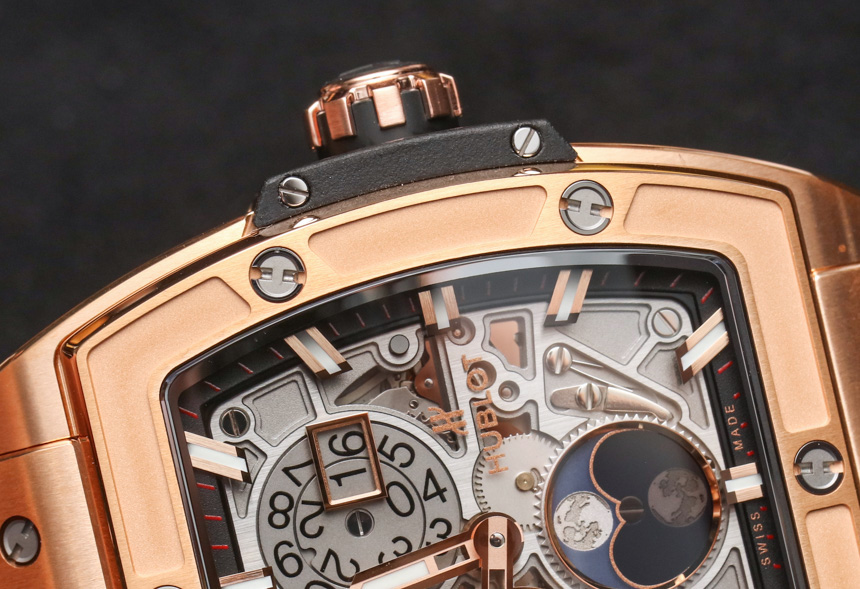
The moon phase indication is decent looking for sure, but I can’t help but feel that this is a complication that just doesn’t really fit the Hublot brand. The Spirit Of Big Bang Moonphase isn’t the only Hublot timepiece to offer a moonphase indicator, so there must be some demand for it out there. Though for me, I simply don’t think of moonphase indicators as a signature complication for Hublot. Why? Well the complication is really more classic in theme and Hublot is pretty much the opposite of that.
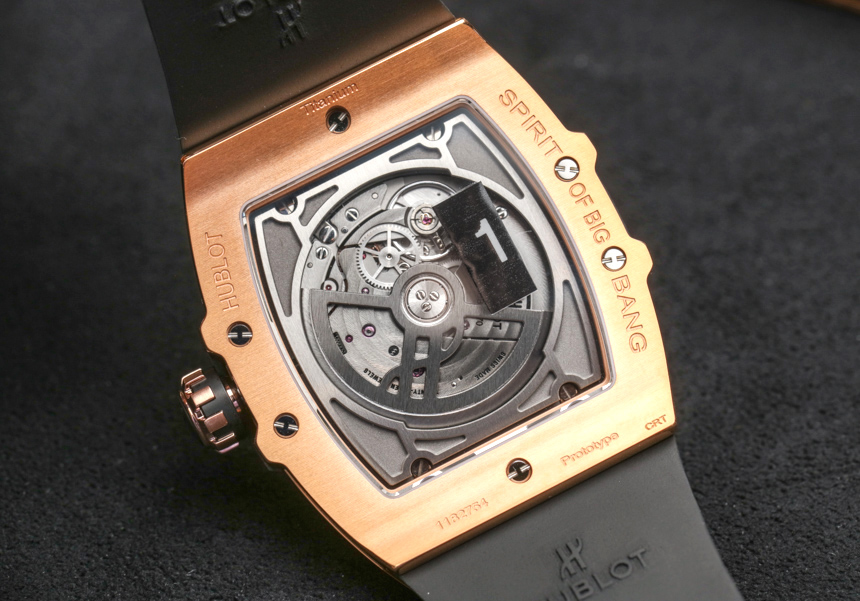
Around the dial is a scale for the hour and minutes, which is a welcome touch that is actually rather classic as well – though rendered in Hublot’s modern aesthetic. In fact, I think that a good way to think about the Spirit Of Big Bang Moonphase is as another “hybrid” concept where Hublot attempts to take something more traditional (the complications) and marry it to something more modern (the overall dial and case design). Do you think that it is successful at that?
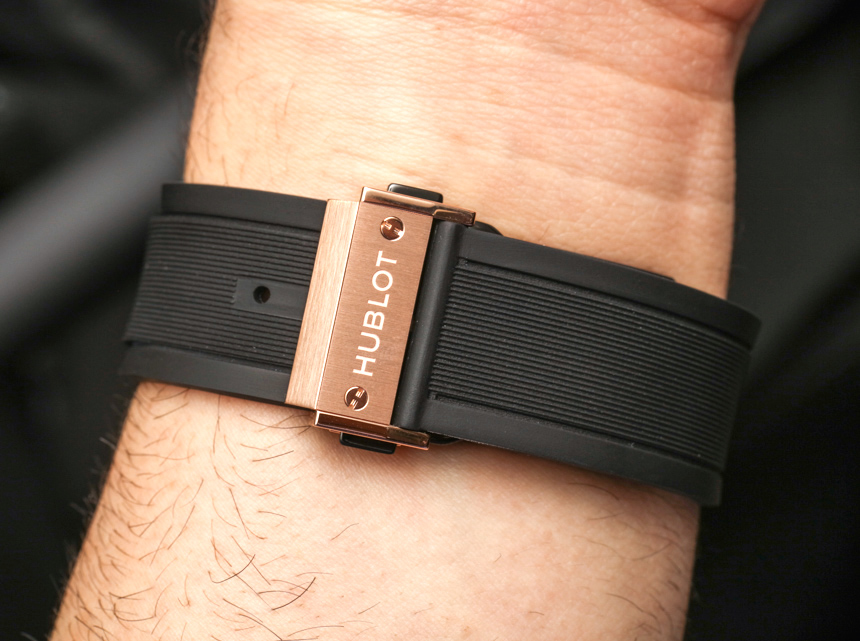
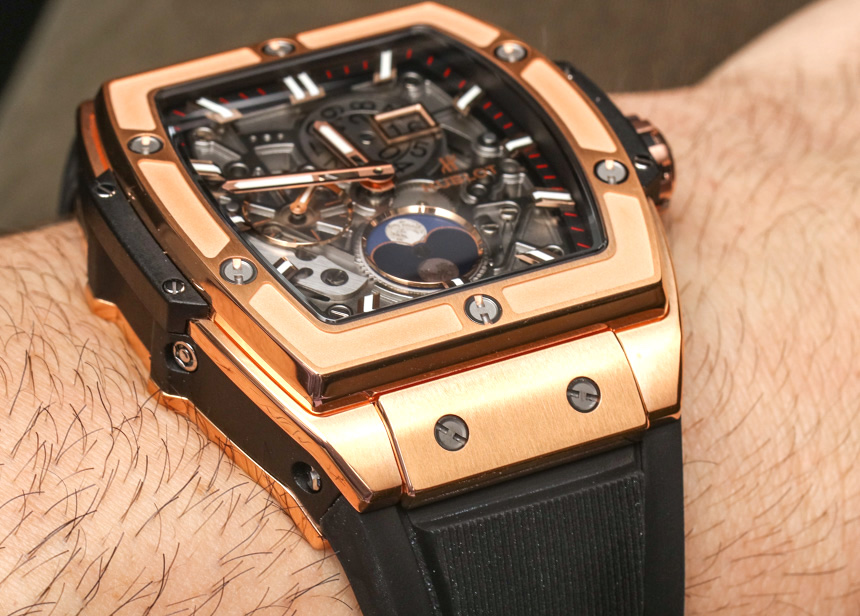
On the wrist, wearing comfort for the 42mm wide Spirit Of Big Bang Moonphase is high. It isn’t a small watch by any means, but the slightly smaller size makes it a lot more practical for more people. I hope that Hublot is able to take this case and play around with movement and dial design a lot to releasing more options in the future. I think for some people this is the Hublot that they never knew they wanted, but suddenly find really appealing. Others will simply find no interest in it, but it won’t reduce their enthusiasm for Hublot. If there is anything that Hublot is masterful at, it is coming out with models that don’t appeal to all of its consumers (in fact most of its products are more niche targeted) and yet experience no degradation in brand appeal or loyalty.
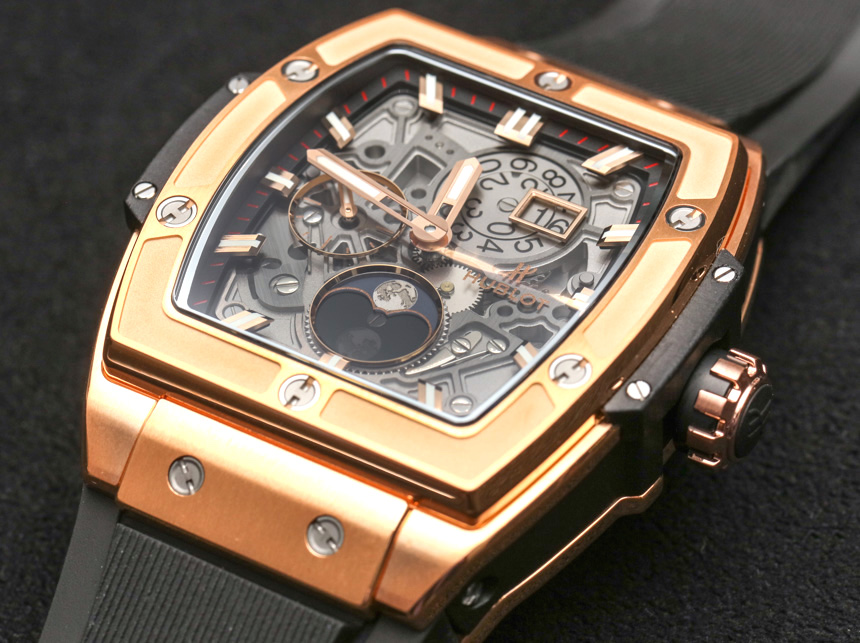
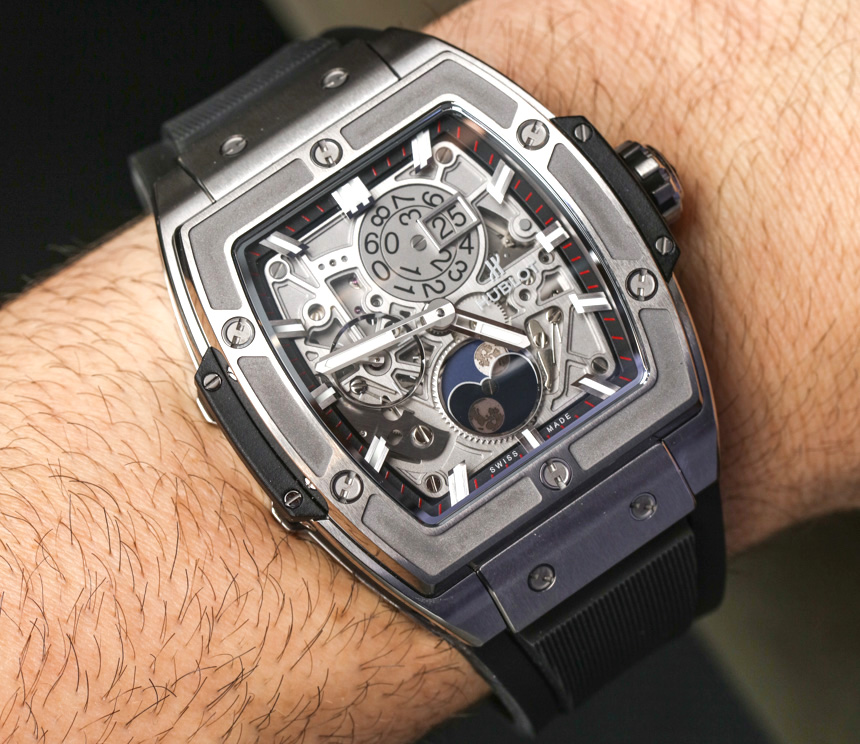
Both current versions of the Hublot Spirit Of Big Bang Moonphase watch come attached to black rubber straps. These aren’t limited editions, and interestingly enough I’ve seen no limited editions (yet) based on these watches. They are indeed among the more uncommon Hublot watches out there, which is made more interesting by the fact that they are so visually distinctive, and actually practical from a wearability standpoint. For everyone who isn’t moved by the Hublot Classic Fusion and wants something a bit more complex looking (but not quite as sporty as a Big Bang), there is the Hublot Spirit Of Big Bang Moonphase. Reference 647.NX.1137.RX is in titanium and reference 647.OX.1138.RX is in King gold, with a retail price of $20,600 and $42,400 respectively. hublot.com

